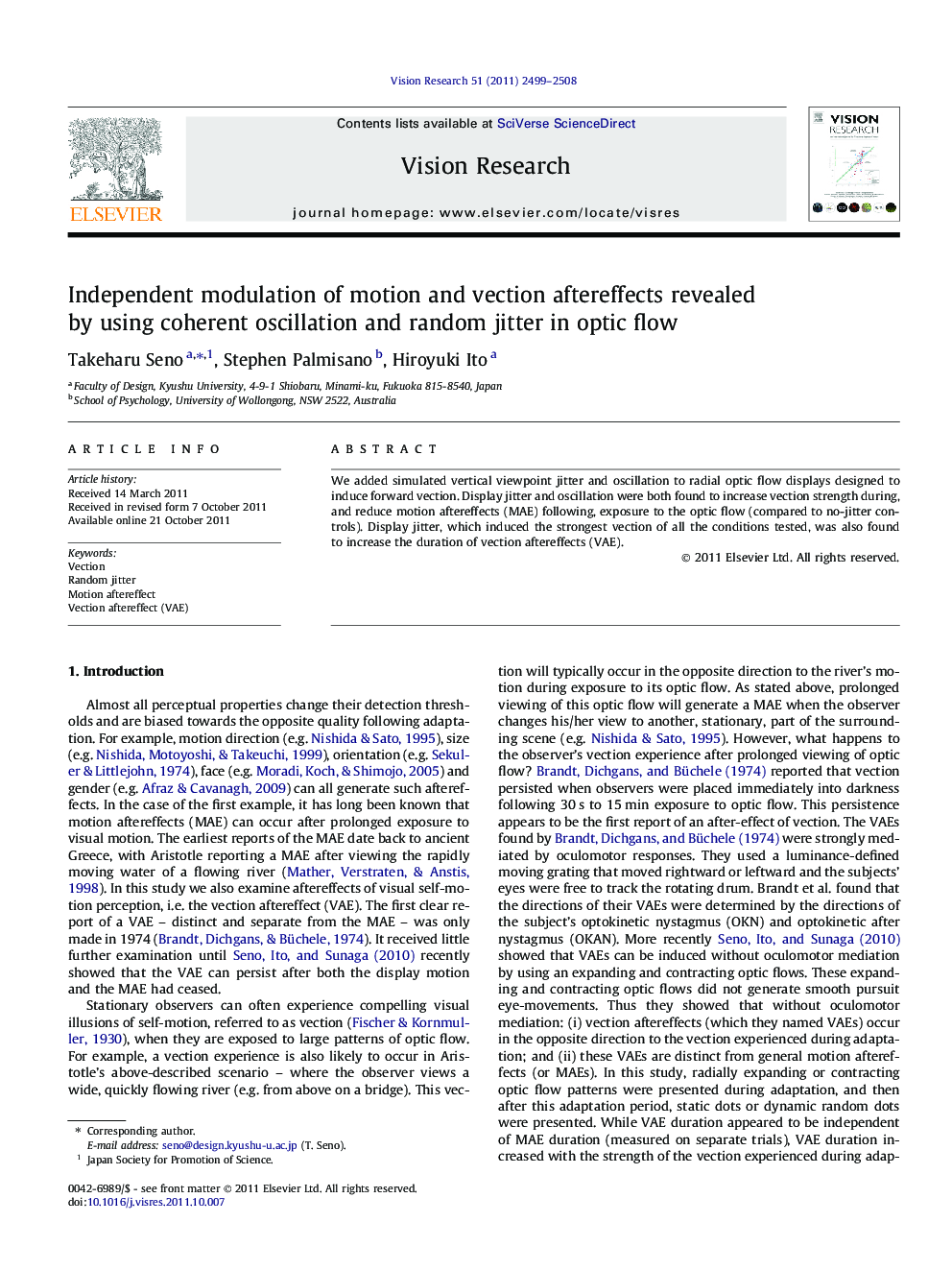| Article ID | Journal | Published Year | Pages | File Type |
|---|---|---|---|---|
| 4034151 | Vision Research | 2011 | 10 Pages |
We added simulated vertical viewpoint jitter and oscillation to radial optic flow displays designed to induce forward vection. Display jitter and oscillation were both found to increase vection strength during, and reduce motion aftereffects (MAE) following, exposure to the optic flow (compared to no-jitter controls). Display jitter, which induced the strongest vection of all the conditions tested, was also found to increase the duration of vection aftereffects (VAE).
► Display jitter and oscillation in optic flow were both found to reduce motion aftereffects (MAE) compared to no-jitter controls. ► Display jitter was found to increase vection strength during, and vection aftereffect (VAE) duration following, exposure to the optic flow. ► There is a pure processing unit for vection, in addition to general motion processing units. ► We propose that VAE may act as an index of the strength of the sensory recalibration during self-motion perception.
